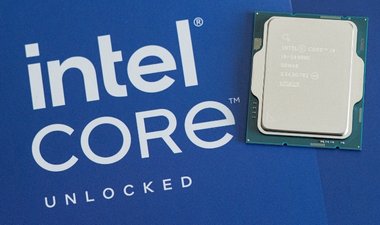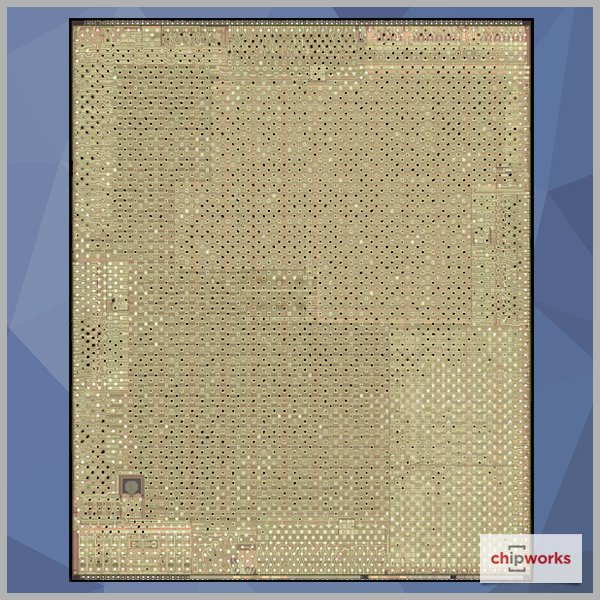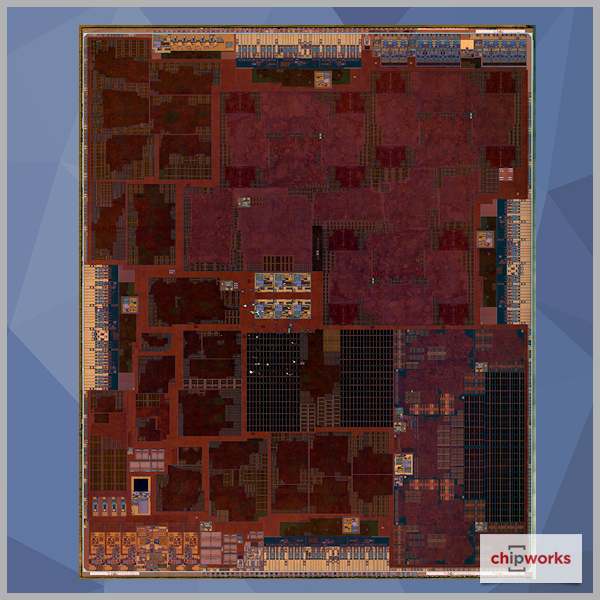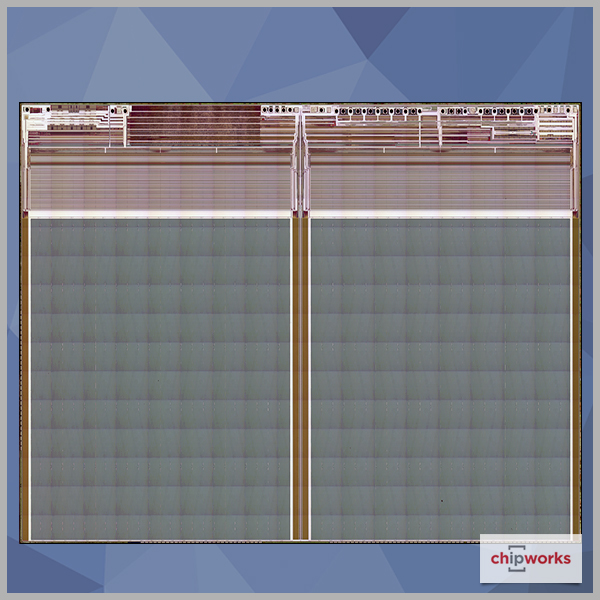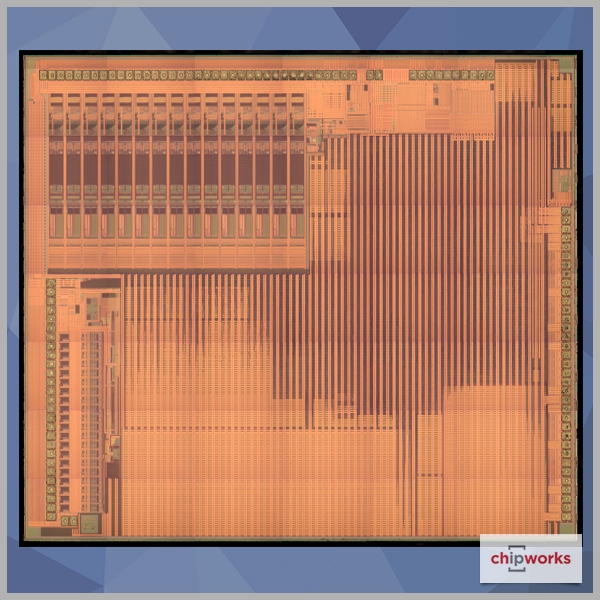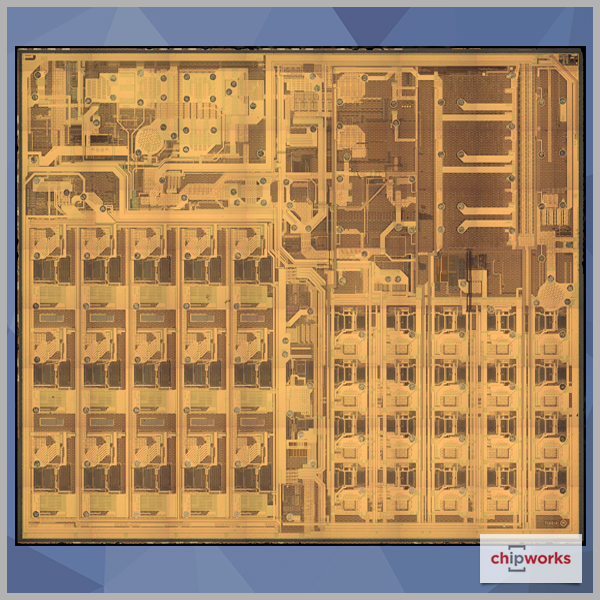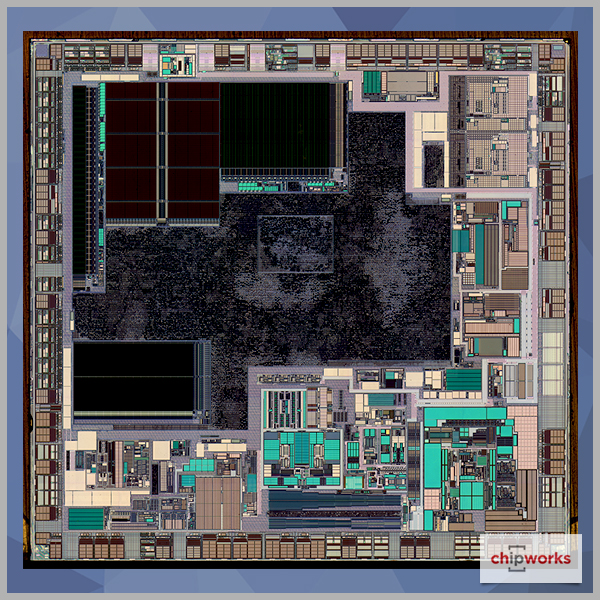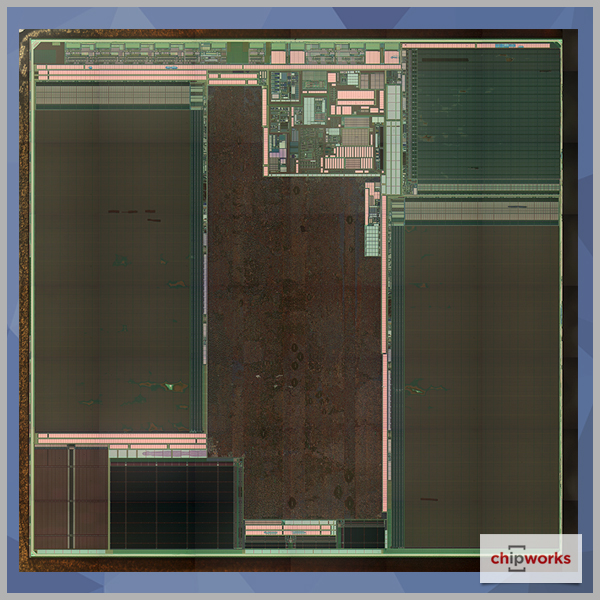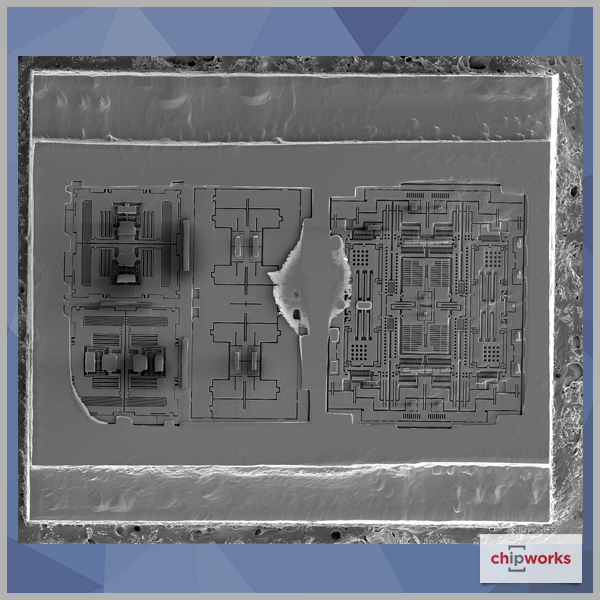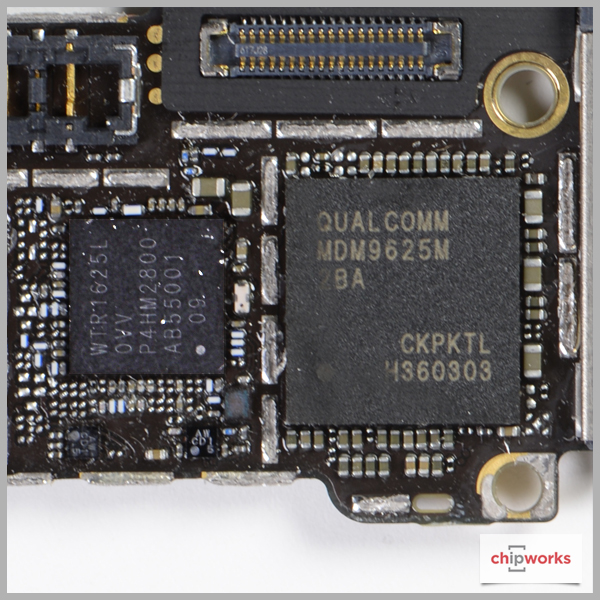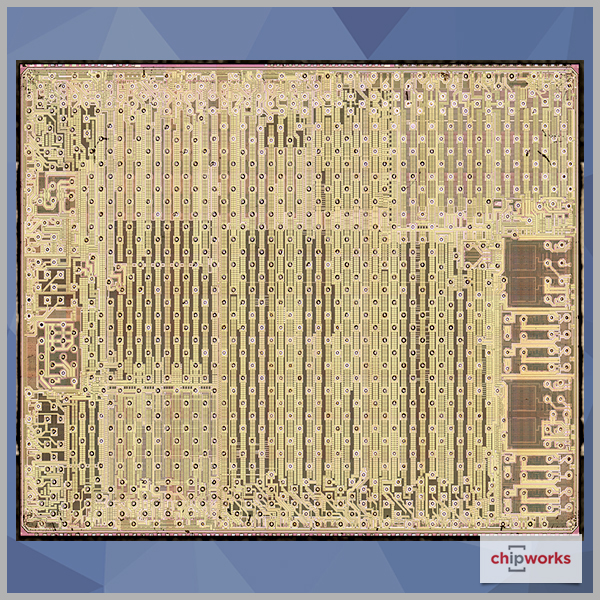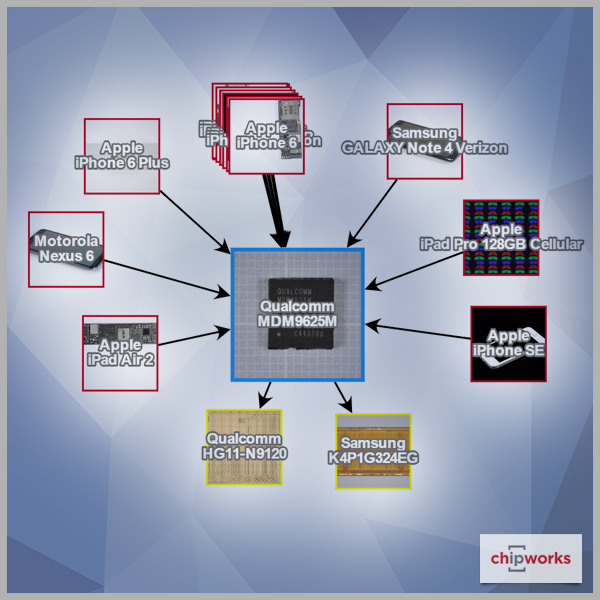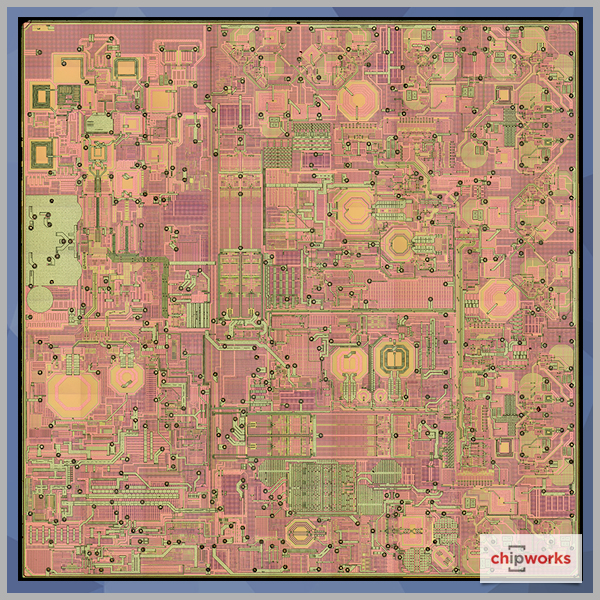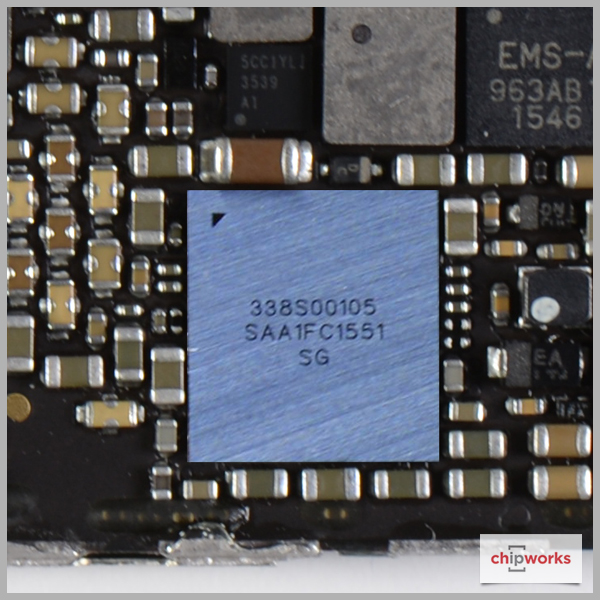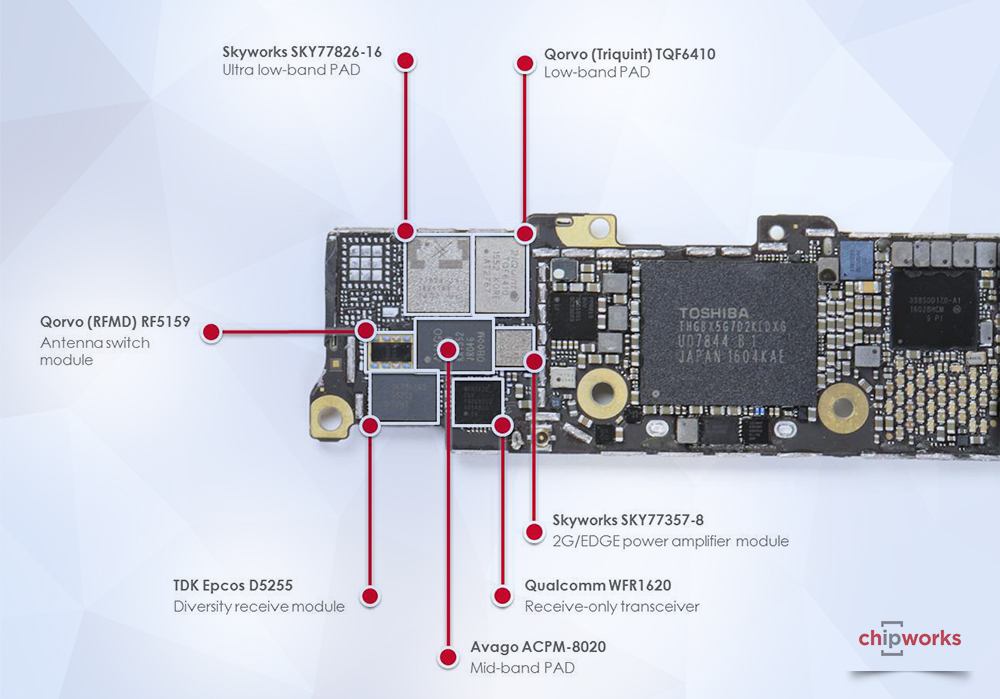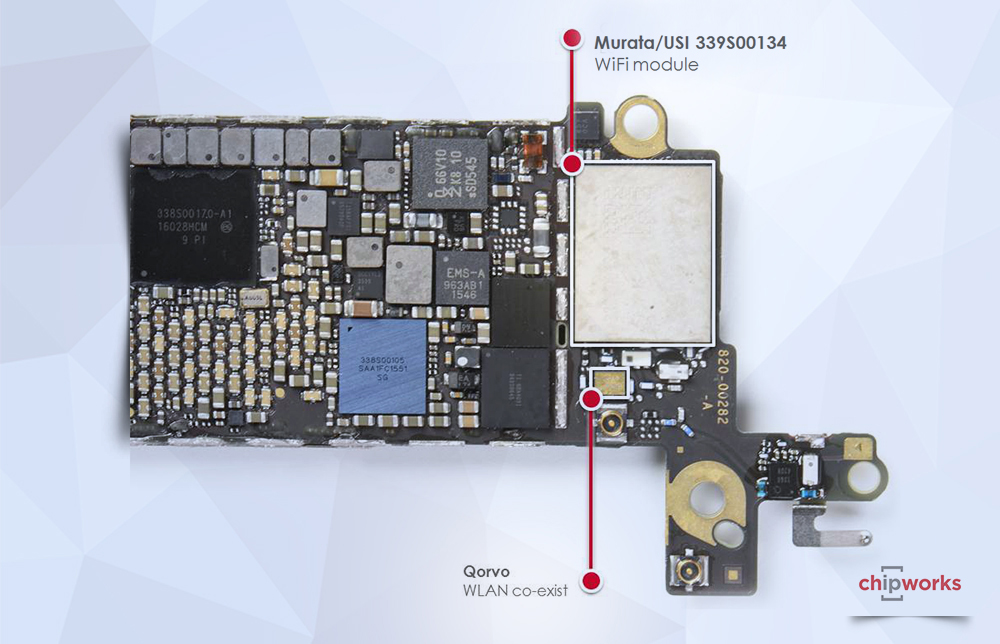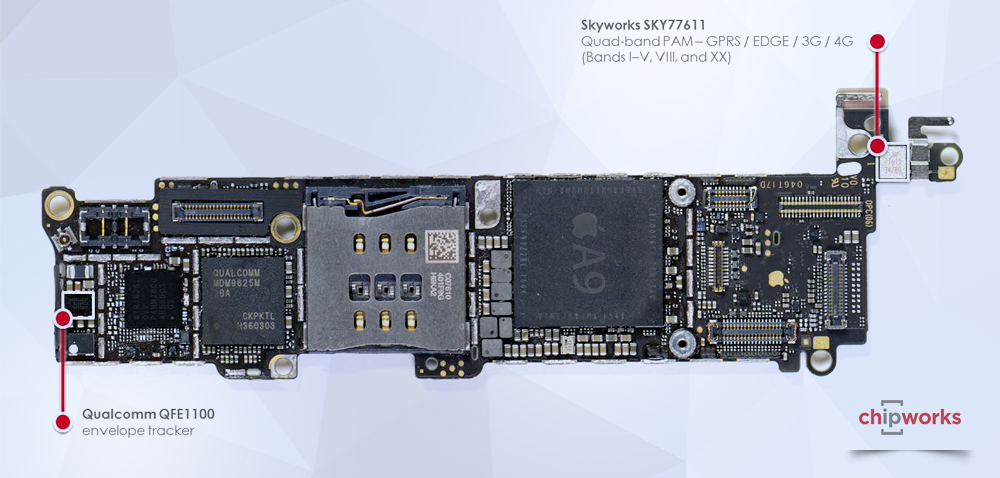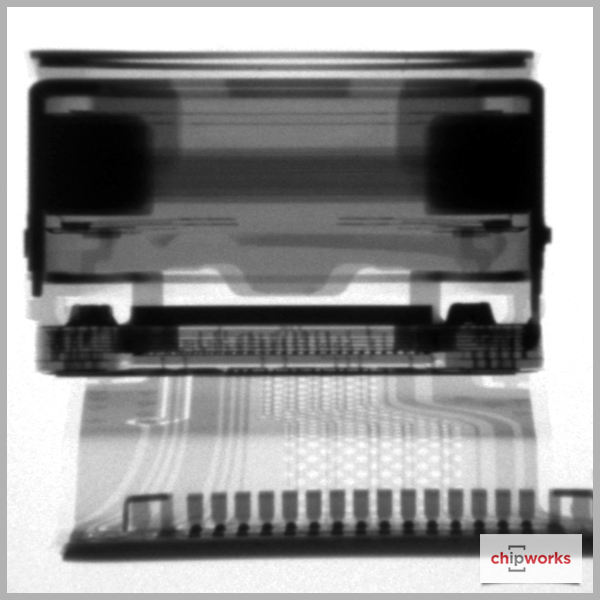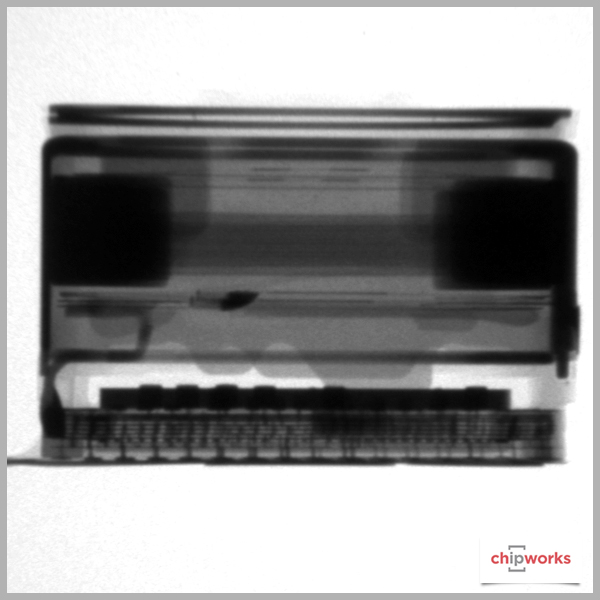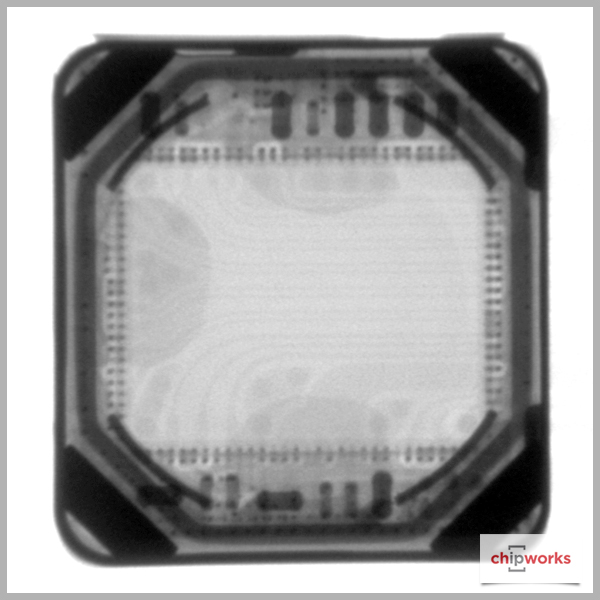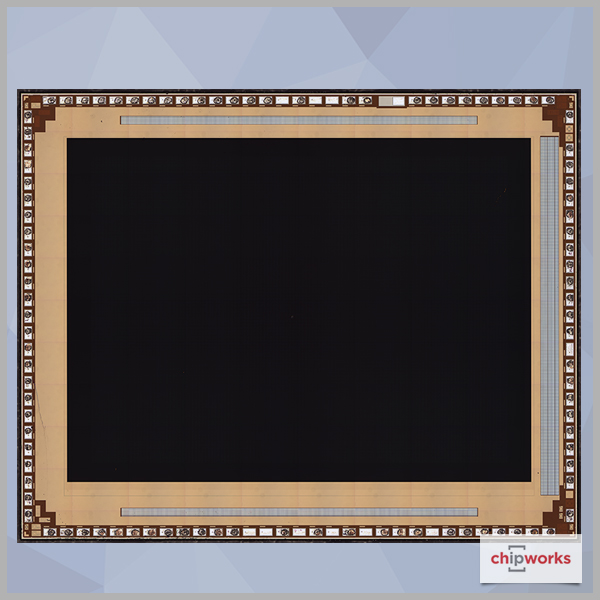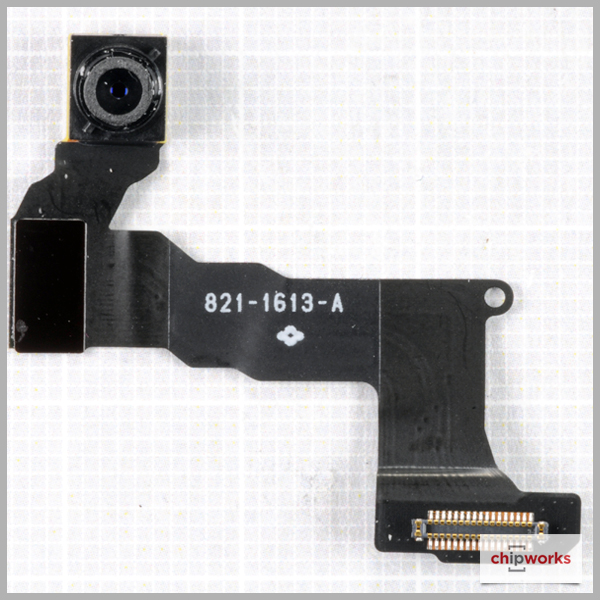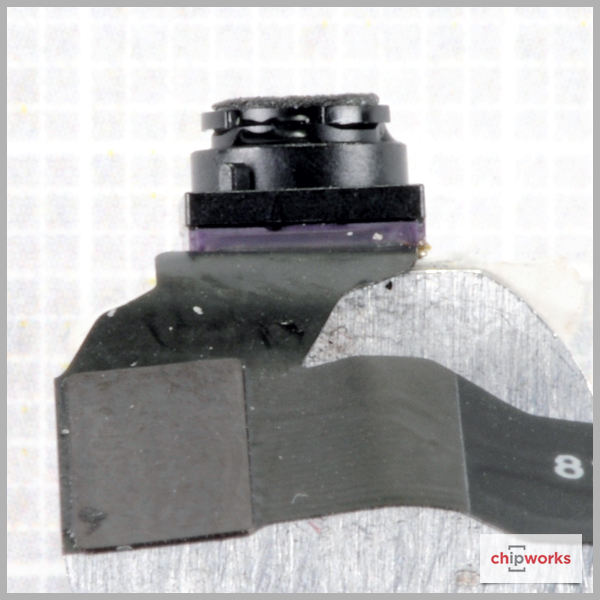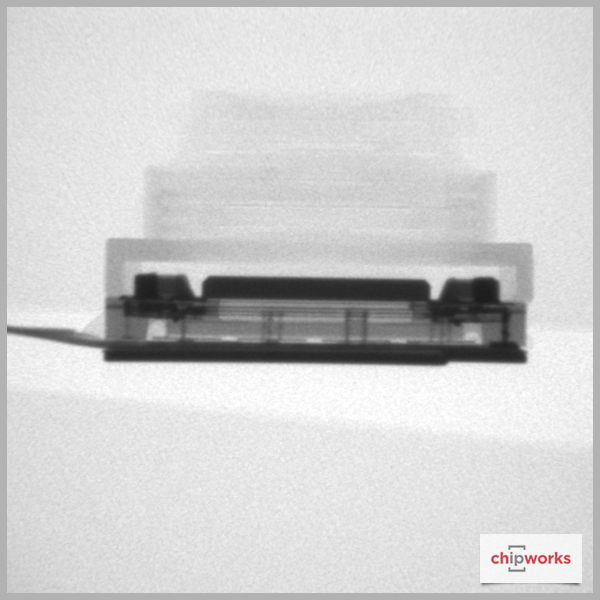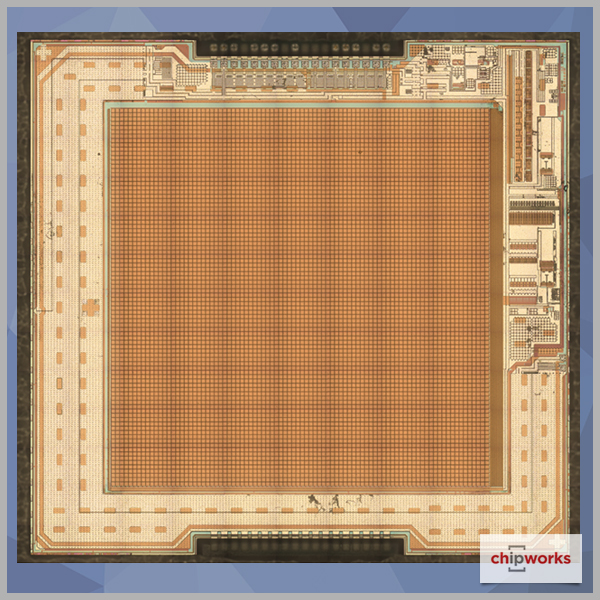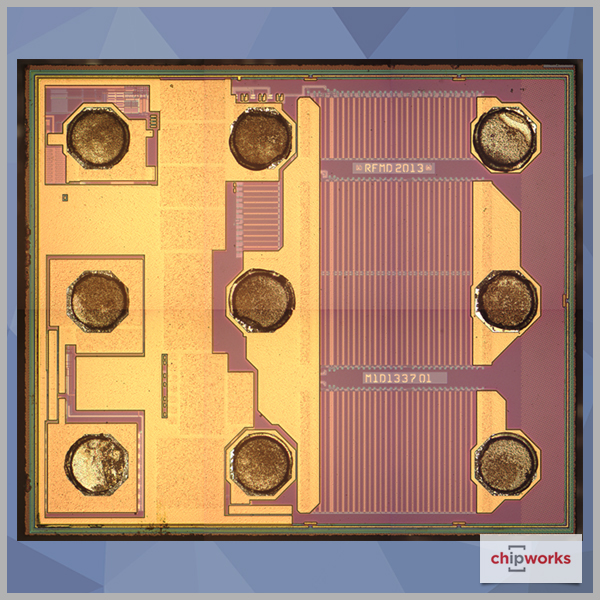Posted: June 6, 2016
Contributing Authors: Jim Morrison, Ray Fontaine, Dick James, Daniel Yang, and Mandi Gingerich
The long-rumored, cost-friendly iPhone SE was finally announced on March 21st of this year. Said to be the iPhone 6s squeezed into the smaller iPhone 5s body, this new iPhone features an appealing price point with flagship-level performance. Some here have even likened it to an old Chevy outfitted with a peppy new Corvette engine. Early reviews of the iPhone SE have been fairly positive; most seem to agree that the 4-inch iPhone packs some powerful internals. We got our hands on an early iPhone SE and will be taking a closer look at those internals to determine how much innovation was packed in between the familiar matte chamfered edges of the iPhone SE.

Register for a complementary cost estimate.
Let’s begin with our initial teardown shots. While the outside does look much like the iPhone 5s, with only a few new touches, at Chipworks, of course it is what is on the inside that really counts. Below you will see the back of the PCB that will support the powerful new combination of internals.

PCB
And the front of the PCB:

PCB
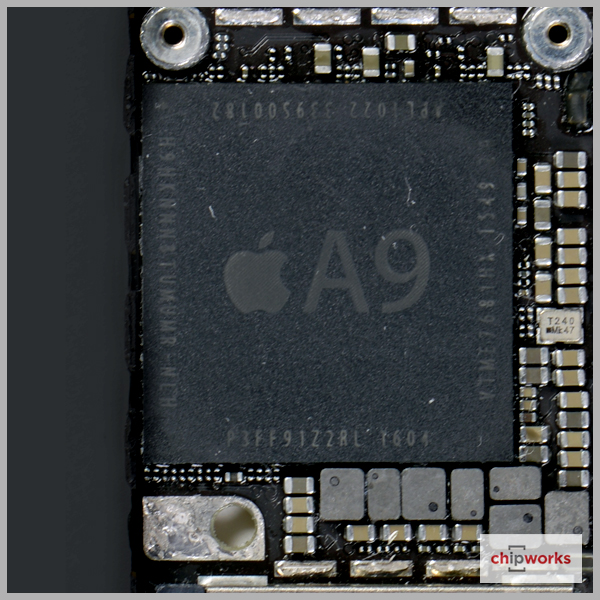
A9 Application Processor
A9 Application Processor
First up, the promised A9 does indeed appear to be the same flagship processor found in the iPhone 6s. Our sample bears the APL1022 part number, indicating that it originated in a TSMC facility. The 1604 date code tells the tale of this little chip’s journey all the way out of the packaging house, onto the motherboard, and into the phone and our hands in just nine weeks, a true credit to Tim Cook's renowned expertise for supply chain management.
Accompanying our flagship processor on its journey is a SK Hynix memory, likely the same 2 GB LPDDR4 mobile DRAM found in the iPhone 6s. The date codes might actually tell a story: the decapped application processor chip is dated 1535, Aug/Sep last year, so it was sitting in inventory for a while; the memory is 1549, last December; and presumably the whole package-on-package was assembled this year at the end of January.
Does this reflect the rumored lack of sales for the iPhone 6s series, and was that the driver for using the A9 in the SE? We believe only Tim Cook can answer that.
Toshiba gets the nod for the 16 GB of flash, and our chip-nerd antennae tell us it’s made in their earlier, and presumably cheaper, 19 nm process (they are now shipping 15 nm parts).
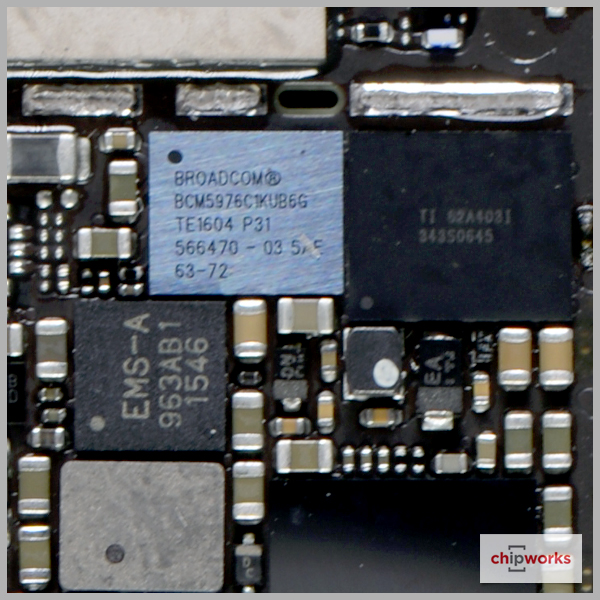
Touch Screen Controller Solution

Other iPhone 6s Throwbacks
Other iPhone 6s Throwbacks
Also a throwback to the iPhone 6/6 Plus is the Qualcomm MDM9625M modem and the WTR1625L RF transceiver next to it. Using Inside Technology, the industry's largest semiconductor databse, we can see (third image) a geneological diagram of the MDM9625M showing what other products are using the Qualcomm modem. Updated continuously as new products hit the market and covering virtually every region of the world, Inside Technology gives you a comprehensive view of how many sockets your competitors have won, in which products, for a fact-based picture of your market position, learn more here.

Touch controllers
OK. So What's New?
Finally, we did see something new in the iPhone SE: a 338S00170 device, which is very likely a new Apple/Dialog power management IC.
RF Front-End
Yesterday we didn’t really have time to go into the wireless part of the SE (you could say the actual phone part of the iPhone), apart from the Qualcomm chips that we detailed. However, Apple have followed the same re-use rules that we’ve already seen, using the same or similar parts as in the 6s and 6s Plus phones. Rather than give you a tedious list to go through, we’ve marked them up on the board images below.
As you can see, the majority of chips are crowded in on one end of the NAND flash side of the board, with a couple at the other end and on the A9 side.
All of the Qualcomm parts that we see here were used in the 6 and 6 Plus; Skyworks has a couple of new parts, but the SKY77357-8 showed up in the 6s/6s Plus, the others are likely newer iterations performing the same function. Avago holds the mid-band power amplifier slot again, as it did in the 6 series. The Qorvo/RFMD antenna switch has shown up many times before, as has the TQF6410. Epcos does seem to have won a design win with its diversity receive module, and the Murata/USI Wi-Fi module is a new Apple part number: whether it has different internals from the 6/6s version we’ll have to wait and see.
So we can’t say there are no new parts in the RF end of the SE, but there is a seriously economical re-use of a lot of them. One point to note is that this is the US version of the phone, and there are clearly solder pad arrays left unoccupied to allow for other wireless regimes, and we will have to see what parts are utilized there. My bet is they’ll be mostly the same as the 6 or 6s series chips!
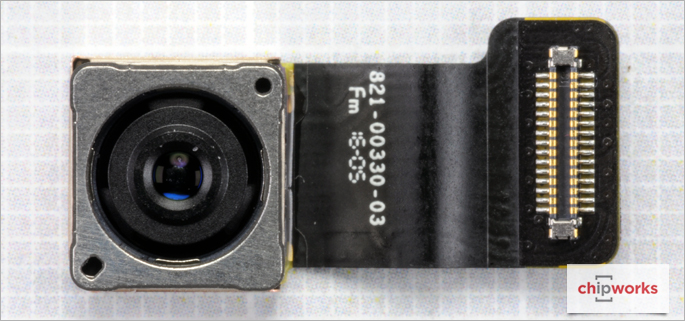
iPhone SE Camera
iPhone SE Cameras
The Apple iPhone SE’s iSight (rear-facing) camera uses a 12 MP resolution back-illuminated CMOS image sensor featuring 4K video and live photo functionality. The SE is not equipped with optical image stabilization. The iSight camera module size is 8.6 mm x 7.8 mm x 5.6 mm thick. It contains a Sony stacked (Exmor RS) sensor with a 6.02 mm x 4.83 mm (29.1 mm2) die size. The pixel pitch is 1.22 µm, as was used for the iPhone 6s/6s Plus. In fact, we’ve compared the decapsulated die photos from the SE and 6s Plus iSight image sensors and they appear to be the same chip.
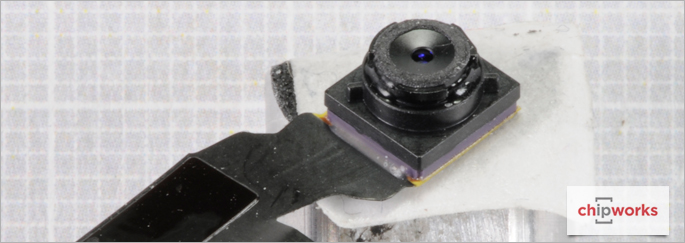
FaceTime HD (front-facing) camera
The FaceTime HD (front-facing) camera is paired with a dual LED flash (True Tone) and the Retina display (Retina Flash) for accurate flesh tones in selfie pictures. The FaceTime camera module size is 6.0 mm x 5.5 mm x 3.8 mm thick. The back-illuminated FaceTime camera chip is sourced from OmniVision and it’s a chip we last saw in the iPhone 5s FaceTime camera. The OmniVision FaceTime camera chip has a resolution of 1.2 MP and a pixel pitch of 1.75 µm. The die, which features OV2E0BNN die markings, has a size of 4.3 mm x 4.1 mm (17.6 mm2).
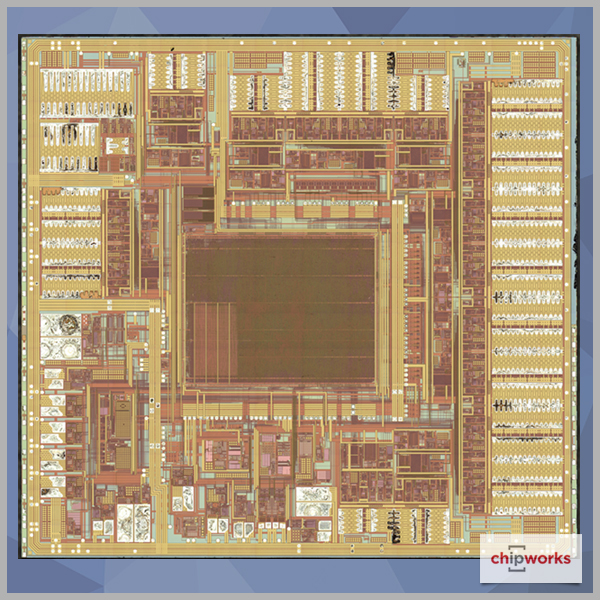
Dialog 338S00170 PMIC
What else can we say?
Now we’ve decapped the “new” Dialog 338S00170 PMIC, we’ve found that it is the same die as the 338S00122 we found in the iPhone 6s.
Another flashback is the use of the first generation fingerprint sensor as in the 5s, so expect a slower response than you’re accustomed to with the newer phones. It should also be a tad cheaper, since it is a slightly smaller die and doesn’t use the expensive through-silicon vias of the 2nd-generation device.
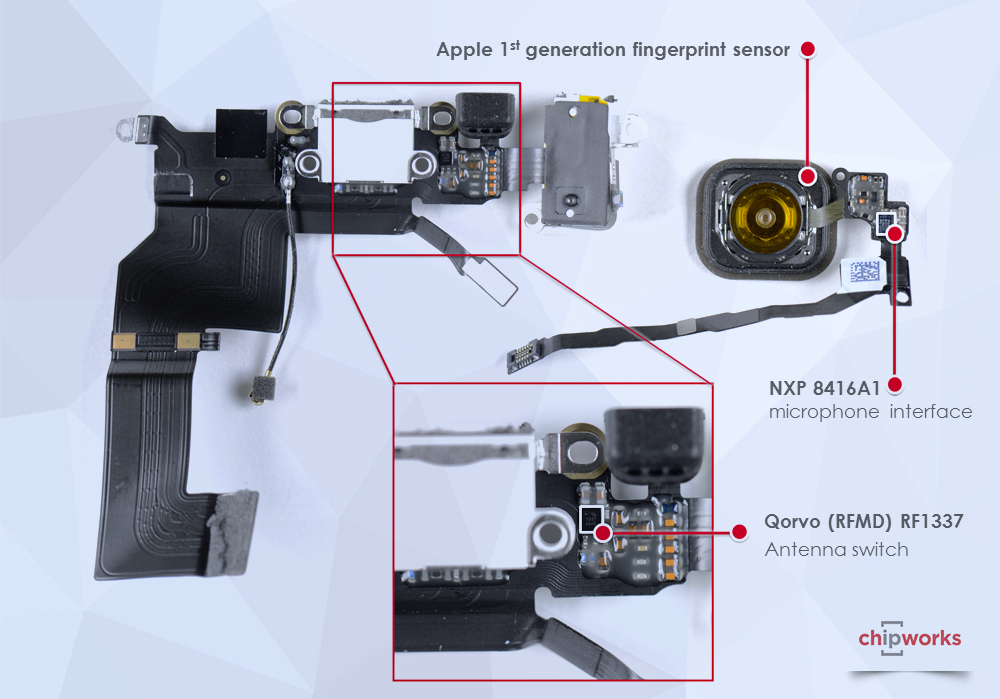
Microphones
Apple is multi-sourcing the microphones, so far we have see three vendors in the two phones we have analyzed. The SE has three microphones, so out of a total of six, Goertek has four, AAC supplies one, and traditional supplier Knowles also one. That production trouble Knowles had a couple of years ago made a window that let other vendors into Apple’s supply chain. Not good for Sony, who makes them for Knowles.
Yesterday in our RF discussion, we missed the Qorvo/RFMD RF1337 switch, tucked away on the Lightning connector assembly; you need sharp eyes to see it! Since it was used in the 6 series, we have a die shot (below).
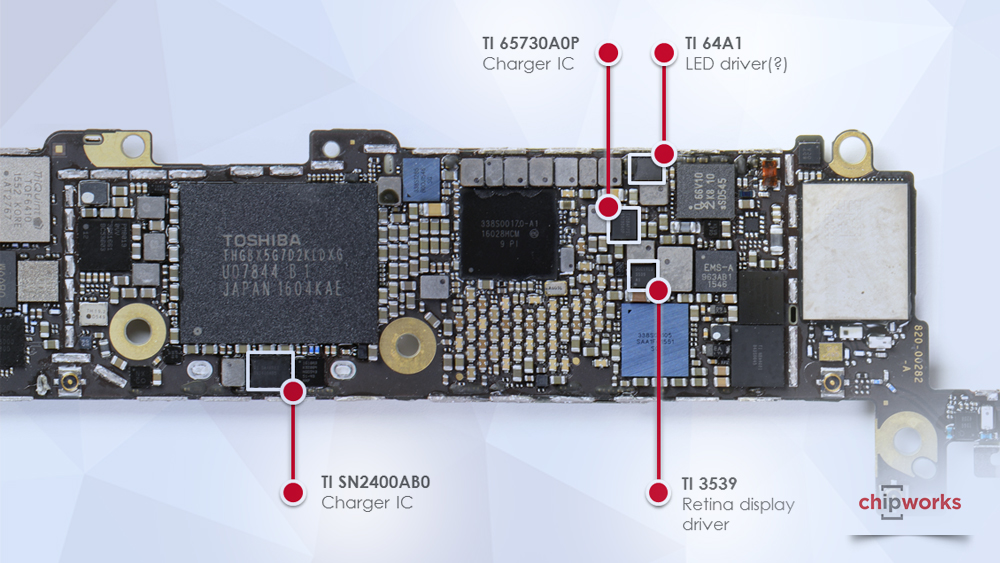
Texas Instruments
In addition to the touch-screen controller, Texas Instruments continues supplying a bevy of analog parts - two LED controllers, presumably for the front and back Retina flash LEDs, and two battery controllers.
Our friends over at iFixit did some plug-and-play testing of the SE display and speaker assembly, vibrator, SIM card and tray, and they found that they match the 5s exactly; so if you do have an old 5s, it might be worth keeping in case you drop your new SE - just replace with the 5s part! Other parts look the same, but there are differences in the connectors, so no joy there.
Summary
After spending a couple of days looking at the SE, what has become clear is that this is not your typical Apple release. There are relatively few new parts, but that hardly means there is no innovation. As is the genius of Apple and its fearless leader, Mr. Cook, it is the combination of all the right parts that make a successful product. Taking the old and the new, and finding just the right, cost-effective balance, is no easy feat.
At the launch on March 21, Apple VP Greg Joswiak stated that 13 percent of iPhones sold in 2015 (more than 30 million units) were 4-inch iPhones. More than 200 million users are still using the 4-inch format (the newest model being the 5s), and Apple’s gamble is that a significant percentage of those users will take the opportunity to upgrade to new technology at a lower price. We’ll see!



